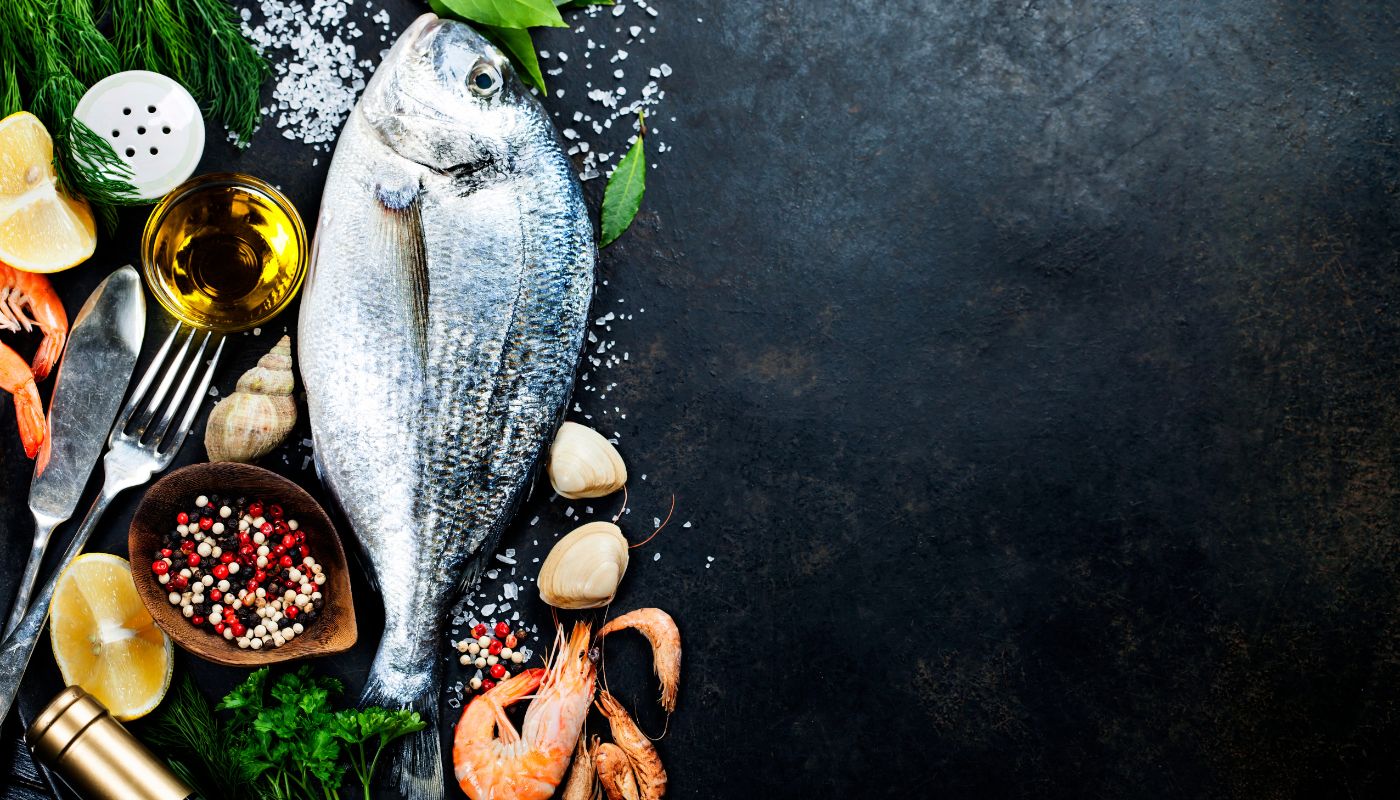Aquaculture: How do we feed our fish? – keeping the omega 3 in the spotlight
I’ve written before about the importance of omega 3 for our health and about the general principals regarding fish nutrition. I’m sure it doesn’t come as a surprise that these subjects are irrevocably linked, and that the oils and fats fish nutritionists use as ingredients in aquafeeds play a relevant role here. When a feed is formulated, it will include a mix of protein rich ingredients, and one or more sources of energy – usually oils and fats (i.e., lipids, including omega 3). Traditionally, the lipid fraction of an aquafeed is fish oil, produced from reduction fisheries (i.e., fisheries of small pelagic fish with low interest for direct human consumption, which are exclusively transformed into fish oil and fish meal, high quality expensive ingredients for animal feeds). Nowadays this type of fisheries is relatively well managed1, to ensure long term sustainability of the fish stocks. Nevertheless, we are transforming wild fish into aquaculture fish and, even if nowadays this conversion results in net gains (check out this article if you want to know more about this), it’s still not the ideal scenario. Aquaculture production will continue to grow in the upcoming years, and, in a world of finite resources, sustained growth must be supported by intelligent replacement strategies. As the fastest growing agro-industrial sector, aquaculture needs to be sustainability-oriented, since it is traditionally dependent on the availability of fish meal and fish oil from fisheries, two high priced feed ingredients whose production has plateaued in the 90’s.
So, what would be an ideal lipid source for aquafeeds, both sustainable and health-supporting?
As with most things in life, it depends! Fish oil is extremely important, since it is the main affordable source of long chain omega 3 (EPA and DHA) with health promoting properties. Other sources are used, with advantages and drawbacks. In the past few decades, research has focused on the search for alternative feed ingredients. In the case of fish oil, the replacement has been achieved with the use of various vegetable oils and animal fats (mainly fish oil from fish coproducts and poultry fat, but also lard and tallow). These lipid sources are readily available, relatively affordable and research has showed that replacement is possible with few drawbacks in terms of zootechnical performance and final product quality. The aquafeed industry has embraced this shift, always maintaining minimum levels of marine lipids in the diets, since all vertebrate species have omega-3 requirements, and fish are no exception.
In this article I talked about some of the emergent ingredient options for aquafeeds, without addressing specific issues related to lipid sources and composition, which I will discuss here.
Vegetable oils as replacement
Vegetable oils, specifically soybean, canola, sunflower and linseed, are currently used in aquafeeds. Research shows that using a blend of different vegetable oils results in better quality and performance than single vegetable oil use, probably because of some balancing of the fatty acids present. For instance, linseed oil is rich in linoleic acid, an omega 3 fatty acid that other oils only have in low quantities. This is good for fish species that can elongate this fatty acid and convert it into EPA and DHA, but most marine species have a limited capacity to do this. And, of course, the use of vegetable oils leads to an imbalanced omega 3 / omega 6 ratio: and studies show this imbalance can be pro-inflammatory2. Potential issues with the use of vegetable oils include lower fish quality, due to low omega 3 levels, but also sometimes an impact on flavour – especially if using a single source like soybean oil.
Competition with biodiesel, human and animal nutrition, as well as sustainability issues, such as the extensive use of land and extensive travel required, are also problematic. Recently research has developed GMO camelina and canola seeds, engineered to be high in EPA and DHA, but consumers are apprehensive, even if oils do not have DNA and therefore present no potential health issues (and let’s not forget that most soybean oil and all canola oil in the market are GMO).
On the upside, vegetable oils are usually reasonably priced (apart from novel engineered high EPA or DHA variants), available in large quantities and stable, both in their nutritional profile and resistance to oxidation.
How about animal fats?
In 2013 the EU reverted its ban on the use of land animal proteins in aquafeeds, and poultry meals were reintroduced. The same happened to poultry fats, even if its use was never forbidden. Other options would be pork lard and beef tallow, but again public perception is an issue with the use of these coproducts, so they are not used in Europe – but are used everywhere else in the world. There are some drawbacks, namely its nutritional profile since they are also low on omega 3. On the other hand, these fats are usually locally produced from coproducts, have relatively stable nutritional profiles, are resistant to oxidation and are affordable, since they compete only with the pet food sector. When compared to vegetable oils, the potential impact on fish quality seems to be slightly lower.
Are there no other sources of omega 3 we can use?
There are! In fact, the richest sources of omega 3 are microalgae. However, these are very expensive ingredients. Additionally, the use of microalgae biomass presents some technical problems and can be harder to digest by the fish. Finally, and this is true also for other alternate lipid sources, fish oil is more than EPA and DHA. Fish oil also provides other essential nutrients like cholesterol (on a side note: cholesterol is essential to life, being the basis of several hormones; whether it is transported in our blood stream by HDL or LDL, with their respective health impacts, is another subject altogether), specific phospholipids and fat-soluble vitamins, and these components can be present in insufficient amounts or altogether absent in other sources. Microalgae are, nonetheless, excellent sources of EPA and DHA. They are produced in sustainable bioreactors and the public perception is excellent.
There are no perfect lipid sources. The alternatives, while promising, still have some issues that need sorting out, like oxidative stability and consistent nutritional profile. We believe that in the future we will address the specific fatty acid needs of each fish species by blending different sources to meet these needs, while keeping the fish as nutritious as possible for you.
Meanwhile? Check out this project, where we are developing new strategies to improve the omega 3 profile of aquaculture fish.




